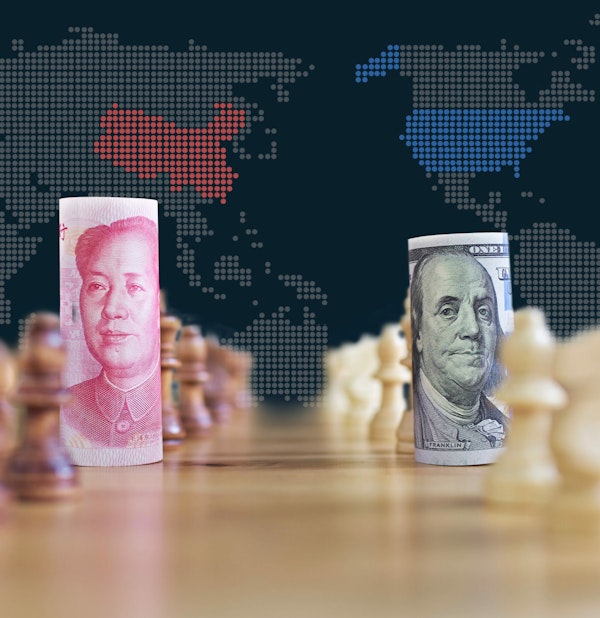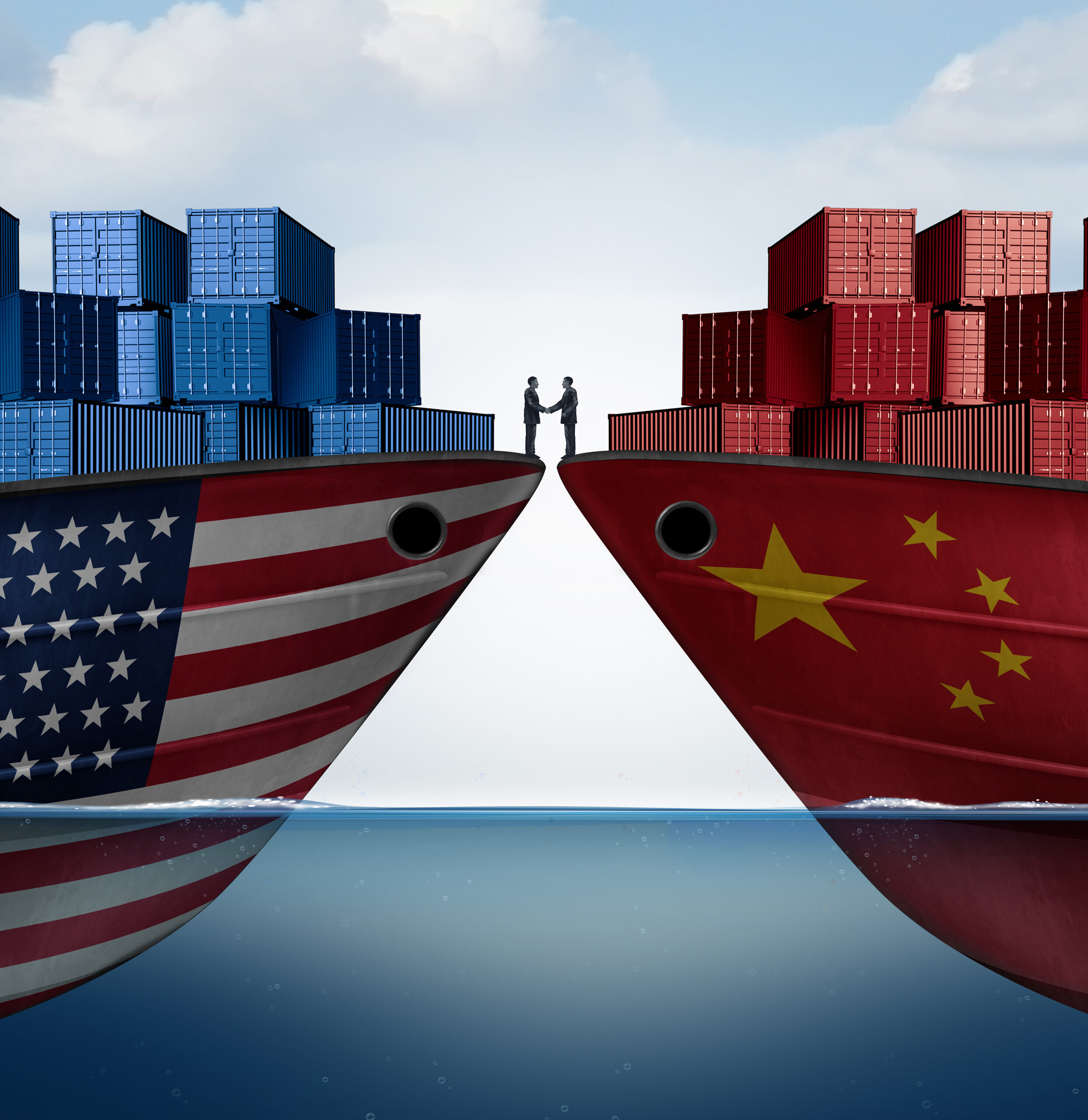Protection without protectionism
China uses its economic power to punish its trade partners. But the West can play that game too.

Economic coercion has become an integral part of China’s foreign policy. Countries that dare to interact with Taiwan, support democracy in Hong Kong, oppose genocide against the Uyghurs, or offend any other of Beijing’s so-called core interests face discriminatory sanctions and embargoes. Since 2008, targets of this weaponization of trade have ranged widely. They include 14 Western and Asian countries, such as Australia, Japan, and Norway, and over 123 corporations, including Walmart and the National Basketball Association. Together, the losses they’ve suffered amount to tens of billions of dollars.
From Beijing’s perspective, such coercion works. After a Chinese ban on Norwegian salmon imports in 2010, Norway’s leaders refused to meet with the Dalai Lama when he visited the country in 2015. Following sanctions against South Korea’s Lotte Corporation in 2016 and embargoes of German pork four years later, the governments of both countries remained silent when China passed a draconian new national security law suppressing democracy in Hong Kong in 2020. The next year, Brazil – fearful of losing billions of dollars in business – ignored security concerns and pressure from the United States and allowed Huawei to participate in its 5G auction. In 2018, to preempt Chinese sanctions, The Gap issued a public apology and stopped selling a T-shirt that featured a map of China that did not include Taiwan and Tibet. Fearful of losing ticket sales, Hollywood studios avoid producing films that cast China in a negative light. All these countries and companies know the risks of defying Beijing; as the Chinese ambassador to New Zealand warned last year, “An economic relationship in which China buys nearly a third of the country’s exports shouldn’t be taken for granted.”
Dealing with China’s weaponization of trade is a critical prerequisite if the United States and its allies hope to succeed in their competition with China. Few, if any, countries can afford to truly decouple from one of the largest economies in the world. So the United States and its like-minded partners need a new strategy to stop Beijing’s bullying. The answer is something called “collective resilience.”
 The world's largest solar farm, Gonghe Solar Park. in Qinghai Province of China. (Photo by Qi Zengbei/China News Service/VCG via Getty Images)
The world's largest solar farm, Gonghe Solar Park. in Qinghai Province of China. (Photo by Qi Zengbei/China News Service/VCG via Getty Images)
Dependence and deterrence
Most targets of Chinese economic coercion depend more on trade with it than it does on them. But this asymmetry should not obscure the reality that many of these same countries do export goods to China and that China is highly – and in some cases totally – dependent on some of them. For example, China relies on Japan for 90% of the silver powder that it uses to make solar panels, and almost all of the rest comes from the United States, South Korea, and Taiwan. China also gets almost 90% of the grass seed it uses for its soccer fields from the United States, and most of the remainder comes from Denmark. In some cases, China could make up for a loss of these imports by producing them domestically, but not without significant cost. Indeed, the 17 countries that are previous and current targets of Chinese economic coercion collectively sell China more than $9 billion in goods on which China is more than 90% dependent and more than $31 billion in goods on which China is more than 70% dependent.
Those numbers give the states in question power – power they could wield if they banded together and promised collective retaliation should China act against any one of them. Forcing China to find a new supplier or pay a higher price for one item would not be enough to change Beijing’s behavior, so trying to take a solitary stand against China would be foolhardy. Joining together in a collective economic defense framework, however, could well threaten enough inconvenience that it might deter Beijing from future predatory behavior. Such a strategy of collective resilience might sound too mercantilist for the ears of some free-trade advocates, but it would be a small price to pay to help protect the liberal international order.
Dealing with China’s weaponization of trade is critical if the United States and its allies hope to succeed in their competition with China.
The steps the Biden Administration has taken thus far to counter China’s economic coercion deserve praise. Washington has encouraged its friends to diversify their trade so that if China imposes tariffs or embargoes their goods, the target state can find alternative markets for those exports. Such an approach has paid off: In 2020, it helped Australia, for example, withstand Chinese pressure after China slapped tariffs on Australian barley, wine, and beef to punish Canberra for pushing for an inquiry into the origins of COVID-19. Thanks to its diversification efforts, Australia was able to redirect these goods to the rest of the world.
The United States has also worked with its partners to develop networks for “reshoring” and “friend-shoring” – that is, moving key elements of various production chains out of China, or places where China exercises inordinate influence, and back to the original country or a trusted economic partner. Examples of this process include the Quad, a security partnership among Australia, India, Japan, and the United States, which has worked to build resilient supply chains for COVID-19 vaccines, emerging and critical technologies, and clean energy. The Minerals Security Partnership is another example. Launched in June 2022, this initiative is aimed at reinforcing supply chains for critical materials such as nickel, lithium, and cobalt. Most recently, the United States, Japan, South Korea, and Taiwan decided to form a “Chip 4” alliance to consolidate their supply chains for semiconductors. All such efforts raise production costs and lower efficiency, but they also help protect against China’s predatory practices.

While these measures are important and necessary, however, they are ultimately reactive and defensive in nature. They protect some supply chains from disruption, but they do nothing to deter China’s overall practice of economic coercion. That’s where collective resilience would come in.
Building the necessary political will to support such a strategy will not be easy; some countries will probably free ride. Smaller states will worry that China will target them as the weakest links, and businesses may be reluctant to participate. Rather than pulling together a random group of states targeted by Chinese bullying, the United States should push a collective resilience strategy through the G-7 group of leading industrial countries, plus Australia. These countries all share the motivation to counter China’s coercion: They recognize that their own self-interest lies with preserving the liberal order against threats from China, they’re all medium-to-large players that cannot be easily picked off, and they have the capabilities to leverage China’s vulnerability. Together, the G-7 countries plus Australia export more than 400 items on which China is 70% dependent, with a trade value of $24.9 billion, and almost 160 items, valued at $7.8 billion, on which China is 90% dependent. If they worked together, these countries could threaten to sanction some of China’s high-dependence items, in order to impose unacceptable costs on China should it attempt to economically coerce any of their members. The focus of this policy wouldn’t be on actually imposing economic punishment; it is not meant to advocate for a trade war. The point, rather, is to use the credible threat of such unified punishment to prevent China’s bad behavior.
Some critics might find a strategy of collective resilience anathema to the very liberal order it is meant to protect. But they should recognize that the strategy is necessary to save that order. It’s been more than three decades since the United States last had to compete with a peer country, and some pundits or policymakers may have forgotten that high-stakes competition against another great power is not pretty and is sometimes dirty. After all, during the Cold War, the United States sometimes had to countenance illiberal practices to protect the Western order. With luck, the threat of collective reprisals will never have to be acted on. In that sense, the strategy resembles nuclear deterrence in the security realm. And like that strategy, it will require both the capabilities and the political will of all involved to signal to China that it can no longer use economic coercion as a tool to threaten the liberal international order.
The Catalyst believes that ideas matter. We aim to stimulate debate on the most important issues of the day, featuring a range of arguments that are constructive, high-minded, and share our core values of freedom, opportunity, accountability, and compassion. To that end, we seek out ideas that may challenge us, and the authors’ views presented here are their own; The Catalyst does not endorse any particular policy, politician, or party.


